Folks,
While building Roden's 1/32 SSW, I was becoming increasingly frustrated with the decals-- they looked fantastic on the sheet, slid off well, but I could not get them to conform to the wing surface (the wings are all lozenge decals for the upper and lower wings) I tried Solvaset, all the Microscale products and Testors decal setting solutions. I even tried straight vinegar. In a fit of desperation, I pulled out my better half's Revlon Hair dryer and set it on the low heat setting-- voila! The decals conformed beautifully. Unfortunately for me, I ruined most of the upper wing five color lozenge with all the other treatments. But I managed to save all the wing crosses, the "LO" for Udet's aircraft, and the bottom wing Lozenge. Since that build, I use hair dryer heat for Roden's decals and I've had perfect results every time-- just don't get the temperature too hot, and don't tell my wife I borrow her hair dryer for building models! I've learned a measured application of heat will get even the most stubborn decals to settle down.
VR, Russ
Early Aviation
Discuss World War I and the early years of aviation thru 1934.
Discuss World War I and the early years of aviation thru 1934.
Hosted by Jim Starkweather
Roden failure
Kevlar06

Joined: March 15, 2009
KitMaker: 3,670 posts
AeroScale: 833 posts

Posted: Friday, October 17, 2014 - 03:34 PM UTC

Jessie_C


Joined: September 03, 2009
KitMaker: 6,965 posts
AeroScale: 6,247 posts

Posted: Friday, October 17, 2014 - 06:44 PM UTC
Roden's old decals also respond fairly well to the old boiling water trick. Plain old heat gets them to behave far better than mere chemicals 

Posted: Saturday, October 18, 2014 - 06:25 AM UTC
Hi all
The last Roden decals I saw were for their Staggerwing - and, while they were clearly different to their rather notorious early decals, they were still not worth using because they were so out of register and smeared.
All the best
Rowan
The last Roden decals I saw were for their Staggerwing - and, while they were clearly different to their rather notorious early decals, they were still not worth using because they were so out of register and smeared.
All the best
Rowan

highlandflinger

Joined: September 04, 2014
KitMaker: 53 posts
AeroScale: 53 posts

Posted: Saturday, October 18, 2014 - 08:11 AM UTC
If Eduard have inaccurate lozenge, what make is the best lozenge for colour? I have acquired a pile of pegasus lozenge and I also have half a dozen eduard kits here with their lozenge.
I did have a Roden Fokker D.V11 1/48 which I didn't finish due to the lozenge decals exploding on contact(In addition to various problems with rushing the build and not realising the fit issues with this kit) and the lozenge also seemed rather bright.
Just how much variation was there in lozenge colour and how much does it matter? I know that the WW1 restorers are using a piece of fabric which was discovered in storage for reference but just how much variance was there in the actual colours? I would reckon that with the dire shortages of all materials in Germany during the 1917-1918 period even fabric dies/screen printing pigments would have to have been subject to shortages leading to a wide variance from batch to batch.
I guess a lot of it is down to conjecture like the mauve colour used in a lot of WW1 german camouflage on models which researchers are now saying was more likely to have been a rusty brown colour.
I did have a Roden Fokker D.V11 1/48 which I didn't finish due to the lozenge decals exploding on contact(In addition to various problems with rushing the build and not realising the fit issues with this kit) and the lozenge also seemed rather bright.
Just how much variation was there in lozenge colour and how much does it matter? I know that the WW1 restorers are using a piece of fabric which was discovered in storage for reference but just how much variance was there in the actual colours? I would reckon that with the dire shortages of all materials in Germany during the 1917-1918 period even fabric dies/screen printing pigments would have to have been subject to shortages leading to a wide variance from batch to batch.
I guess a lot of it is down to conjecture like the mauve colour used in a lot of WW1 german camouflage on models which researchers are now saying was more likely to have been a rusty brown colour.
highlandflinger

Joined: September 04, 2014
KitMaker: 53 posts
AeroScale: 53 posts

Posted: Saturday, October 18, 2014 - 08:32 AM UTC
Forgot to mention I have almmost completed the Roden Nieuport 28 I referred to previously (just got the tense affair of the decals to do) Rigging went fine using my normal method of invisible mending thread through wing technique. The only issue I had this time was that the CA glue had a harder time gripping on the holes in the model so had to wait to give it plenty of time to cure before tensioning.
I did not experience any of the rigging problems I had with the SE5a and I can only conclude that these were in the main down to the fact that I attempted to use a different rigging method which caused tension on the struts off the vertical which caused them to bow. I decided that the amount of repair to make a satisfactory finish was not something I desired to undertake so it went to Valhalla.
In my normal method of rigging the first and most tensioned lines I fit are the crossover lines between the interplane struts and these have to be perfectly in line between the struts and the result, I find is a very strong and robust model (I have dropped more than one model on the floor rigged with carefully tensioned thread and escaped damage whereas once or twice when I've dropped a model prior to rigging the result has been much cursing and repair once the exploded parts had been located and wrested from the carpet monster).
Having said this I am still not a fan of Roden, mainly because I just don't find the quality of plastic they use up to a standard that I wish to work with and the low quality decals. On a price basis when I can get kit's with better more detailed instructions/information, better decals, photo etch and resin for not many more smackeroos I know who gets my money.
I did not experience any of the rigging problems I had with the SE5a and I can only conclude that these were in the main down to the fact that I attempted to use a different rigging method which caused tension on the struts off the vertical which caused them to bow. I decided that the amount of repair to make a satisfactory finish was not something I desired to undertake so it went to Valhalla.
In my normal method of rigging the first and most tensioned lines I fit are the crossover lines between the interplane struts and these have to be perfectly in line between the struts and the result, I find is a very strong and robust model (I have dropped more than one model on the floor rigged with carefully tensioned thread and escaped damage whereas once or twice when I've dropped a model prior to rigging the result has been much cursing and repair once the exploded parts had been located and wrested from the carpet monster).
Having said this I am still not a fan of Roden, mainly because I just don't find the quality of plastic they use up to a standard that I wish to work with and the low quality decals. On a price basis when I can get kit's with better more detailed instructions/information, better decals, photo etch and resin for not many more smackeroos I know who gets my money.
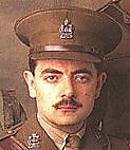
BoRoss78

Joined: February 28, 2013
KitMaker: 36 posts
AeroScale: 36 posts

Posted: Tuesday, October 21, 2014 - 09:10 AM UTC
Quoted Text
If Eduard have inaccurate lozenge, what make is the best lozenge for colour? I have acquired a pile of pegasus lozenge and I also have half a dozen eduard kits here with their lozenge.
There are threads here about lozenge decals. You just have to read them.
Quoted Text
I did have a Roden Fokker D.V11 1/48 which I didn't finish due to the lozenge decals exploding on contact(In addition to various problems with rushing the build and not realising the fit issues with this kit) and the lozenge also seemed rather bright.
Fit issues? Again there are multiple threads here about the various issues of Fokker D.VII kits. Not Fok. D.V11 Roman numerals were used in most German designations.
Quoted Text
Just how much variation was there in lozenge colour and how much does it matter? I know that the WW1 restorers are using a piece of fabric which was discovered in storage for reference but just how much variance was there in the actual colours? I would reckon that with the dire shortages of all materials in Germany during the 1917-1918 period even fabric dies/screen printing pigments would have to have been subject to shortages leading to a wide variance from batch to batch.
It matters only if you want to be accurate. Otherwise paint it with pink and purple polka dots. It your kit.
Quoted Text
I guess a lot of it is down to conjecture like the mauve colour used in a lot of WW1 german camouflage on models which researchers are now saying was more likely to have been a rusty brown colour.
No, the rust brown was deleted after April 1917 (quoting Mr. Lawson and Mr. Abbott) The Mauve / purple did not show up until late summer 1917 due to the ability of dye companies to reproduce the color in mass quantities and the military accepting the colour because it was cheaper. Dan Abbott did an entire series of articles over on theaerodrome.com concerning the German camouflage system in WWI. It takes into account the manufacturers and their sources.
Stephen Lawson where are you?!
highlandflinger

Joined: September 04, 2014
KitMaker: 53 posts
AeroScale: 53 posts

Posted: Wednesday, October 22, 2014 - 04:10 AM UTC
Very interesting stuff thank you, Though I think I shall refrain from the pink and purple polka dot scheme 
What I was attempting to point out is that these WW1 models are only ever going to be reasonably accurate approximations of the original machines and as such the representation of lozenge camouflage (in my view) only needs to be approximate. I presume it was basically one of the earliest examples of disrupt pattern material(DPM) in it;s conception where the camouflage makes it hard for your brain to figure out what it is looking at and, therefore, quite where to aim your guns rather than an attempt to blend into the scenery it is passing through.
I have always found the use of mauve in WW1 camouflage schemes a little more puzzling(although it surely does brighten up a model) and I don't believe I have ever come across an example of mauve being used in any other camouflage scheme. I would have thought that rust brown or other earth tones would have been much more effective over the blasted earth of the front during WW1.
As for my failed fokker a lot of the fit issues were due to me not paying attention (I fitted the tubular frame for the engine and then discovered that this should not be used if you are planning to have closed cowlings) though the kit was at fault when it came to a lower wing that needed a fair bit of work to get it to fit onto the fuselage. But the main reason the kit bit the dust was the decals. (I didn't have any spare lozenge at the time as being a bit of a skinflint I find it hard to get to the bottom of my pockets for aftermarket kit although I have acquired a substantial pile of lozenge since then). I do find it unsatisfactory that basic components in the box are of such quality at the prices these kits cost. In any other goods bought in Britain you would probably be entitled to a refund of your purchase cost as the item would be considered unfit for purpose. Whatever the issues with colours there are with Eduard lozenge I have found their decals to be unfailingly excellent in application. I have built a few of Eduard's full lozenge covered beasties without a single tear and once the decals are down I have found that, after a quick brush coat of Humbrol clear gloss enamel, I can handle the model as much as I like with no lifting, chipping etc.

What I was attempting to point out is that these WW1 models are only ever going to be reasonably accurate approximations of the original machines and as such the representation of lozenge camouflage (in my view) only needs to be approximate. I presume it was basically one of the earliest examples of disrupt pattern material(DPM) in it;s conception where the camouflage makes it hard for your brain to figure out what it is looking at and, therefore, quite where to aim your guns rather than an attempt to blend into the scenery it is passing through.
I have always found the use of mauve in WW1 camouflage schemes a little more puzzling(although it surely does brighten up a model) and I don't believe I have ever come across an example of mauve being used in any other camouflage scheme. I would have thought that rust brown or other earth tones would have been much more effective over the blasted earth of the front during WW1.
As for my failed fokker a lot of the fit issues were due to me not paying attention (I fitted the tubular frame for the engine and then discovered that this should not be used if you are planning to have closed cowlings) though the kit was at fault when it came to a lower wing that needed a fair bit of work to get it to fit onto the fuselage. But the main reason the kit bit the dust was the decals. (I didn't have any spare lozenge at the time as being a bit of a skinflint I find it hard to get to the bottom of my pockets for aftermarket kit although I have acquired a substantial pile of lozenge since then). I do find it unsatisfactory that basic components in the box are of such quality at the prices these kits cost. In any other goods bought in Britain you would probably be entitled to a refund of your purchase cost as the item would be considered unfit for purpose. Whatever the issues with colours there are with Eduard lozenge I have found their decals to be unfailingly excellent in application. I have built a few of Eduard's full lozenge covered beasties without a single tear and once the decals are down I have found that, after a quick brush coat of Humbrol clear gloss enamel, I can handle the model as much as I like with no lifting, chipping etc.
highlandflinger

Joined: September 04, 2014
KitMaker: 53 posts
AeroScale: 53 posts

Posted: Wednesday, October 22, 2014 - 05:00 AM UTC
As far as trolling the archives for discussions and build logs I am well aware that they are there but I didn't primarily join the forum to access these resources. The main reason I came on was to hear what other people have to say and join a community of people talking to each other about their modelling experiences ( A cafe rather than a library if you like)
I tend to avoid reading build logs as I prefer the challenge of figuring out the problem for myself and triumphing over it through my own ingenuity, whether this results in an accurate model or not I know that I have won some kind of battle. One example of this is that I built the Eduard Spad XIII(early) a few months ago and contrary to the build logs I looked at where the fit problem of the top deck was resolved by moving the fuselage halves apart to fit the deck and filling the void between them with plasticard I opted to cut the front face of the deck and increase the arching of it until the sides came in to meet the joined halves which resulted in a very pleasing (to me at least) model with far less fuss and engineering and it also meant that the cockpit instrument shelf fitted under the deck and the top wing fitted perfectly level. Whether this is the correct way I have no idea but it worked for me and was entirely my own victory over the only really problematic Eduard kit I have built. I will see soon whether this is a problem with other version of the Spad XIII as I have two of the American Eagles limited edition kits waiting to be built.
I tend to avoid reading build logs as I prefer the challenge of figuring out the problem for myself and triumphing over it through my own ingenuity, whether this results in an accurate model or not I know that I have won some kind of battle. One example of this is that I built the Eduard Spad XIII(early) a few months ago and contrary to the build logs I looked at where the fit problem of the top deck was resolved by moving the fuselage halves apart to fit the deck and filling the void between them with plasticard I opted to cut the front face of the deck and increase the arching of it until the sides came in to meet the joined halves which resulted in a very pleasing (to me at least) model with far less fuss and engineering and it also meant that the cockpit instrument shelf fitted under the deck and the top wing fitted perfectly level. Whether this is the correct way I have no idea but it worked for me and was entirely my own victory over the only really problematic Eduard kit I have built. I will see soon whether this is a problem with other version of the Spad XIII as I have two of the American Eagles limited edition kits waiting to be built.

Jessie_C


Joined: September 03, 2009
KitMaker: 6,965 posts
AeroScale: 6,247 posts

Posted: Wednesday, October 22, 2014 - 04:37 PM UTC
The theory behind the mauve (and the mix of other colours) in the lozenge pattern is that at a distance, the colours blend together into a very neutral tone that the human eye finds difficult to separate from the background because it is very chameleon-like in its ability to seemingly shift colours depending upon light levels and what it's in front of.
highlandflinger

Joined: September 04, 2014
KitMaker: 53 posts
AeroScale: 53 posts

Posted: Thursday, October 23, 2014 - 06:41 AM UTC
Ah sorry I think I may have created a misunderstanding, I meant the use of mauve withi what we would now call "traditional" type of camouflage used on the wings of aircraft such as the Albatros and Roland C.II. I can understand how the lozenge works in a similar way to the modern Flektarn developed originally for the Wehrmacht and now used by the Bundeswehr which has proven highly effective and now has variants used by the US marines as well as other elite forces although it was avoided for a long time because of association with elite SS units of WWII despite having been repeatedly tested against other types and found to be one of the most effective.
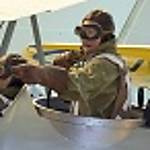
CaptnTommy

Joined: October 26, 2009
KitMaker: 424 posts
AeroScale: 389 posts

Posted: Thursday, October 23, 2014 - 07:39 AM UTC
I have spoken to several people during my stay in England (2008) about this subject, and one person (at the RAF museum, I recall) said, the lozenge colors were probably as as open to interpretaion as the various shades of PC-10.
The RAF experts (in the www.flightglobal.com FLIGHT archives), writing in the various technical articles of 1916-1919 issues, on German Aircraft were very general on their finishes section; In each of the reports the included aircraft finishes section, are fastenating, but very general. This is the Hannover CL-2 Quote from Sept. 5, 1918:
"Camouflage.—As will be seen from the photographs, the
main planes are camouflaged with the usual mosaic of colours,
yellow, green, pink and blue. These colours are dyed into
the fabric before doping, and a similar decoration is painted
on the fabric of the fuselage, which is generally dark-greenish in colour."
The Smithsonian Fok.D-VII, Alb.D-Va, and Halb.CL-IV all have diferent hue and brightness on there Lozenge.
Enjoy
Captn Tommy
The RAF experts (in the www.flightglobal.com FLIGHT archives), writing in the various technical articles of 1916-1919 issues, on German Aircraft were very general on their finishes section; In each of the reports the included aircraft finishes section, are fastenating, but very general. This is the Hannover CL-2 Quote from Sept. 5, 1918:
"Camouflage.—As will be seen from the photographs, the
main planes are camouflaged with the usual mosaic of colours,
yellow, green, pink and blue. These colours are dyed into
the fabric before doping, and a similar decoration is painted
on the fabric of the fuselage, which is generally dark-greenish in colour."
The Smithsonian Fok.D-VII, Alb.D-Va, and Halb.CL-IV all have diferent hue and brightness on there Lozenge.
Enjoy
Captn Tommy

JackFlash

Joined: January 25, 2004
KitMaker: 11,669 posts
AeroScale: 11,011 posts

Posted: Thursday, October 23, 2014 - 09:29 AM UTC
Quoted Text
". . .The RAF experts (in the www.flightglobal.com FLIGHT archives), writing in the various technical articles of 1916-1919 issues, on German Aircraft were very general on their finishes section; In each of the reports the included aircraft finishes section, are fastenating, but very general. This is the Hannover CL-2 Quote from Sept. 5, 1918:
"Camouflage.—As will be seen from the photographs, the
main planes are camouflaged with the usual mosaic of colours,
yellow, green, pink and blue. These colours are dyed into
the fabric before doping, and a similar decoration is painted
on the fabric of the fuselage, which is generally dark-greenish in colour."
The Smithsonian Fok.D-VII, Alb.D-Va, and Halb.CL-IV all have diferent hue and brightness on there Lozenge.
Enjoy
Captn Tommy
Those "experts" as you call them were making general statement because they evidently didn't have Pantone colour chips. By the way the Smithsonian "Fokker D.VII" has silk screen 4 colour lozenge. The "Albatros D.Va and Halberstad CL.IV" are 5 colour so they are not going to match. And the Alb. D.Va used elements of its own aged fabric for studies. The Halberstadt CL.IV used original documentation and unused fabric samples. Three runs were done then the "real" experts looked them over. Guess which one is closer.
https://www.facebook.com/media/set/?set=a.475647815908556.1073741832.394338610706144
Four colour modern top
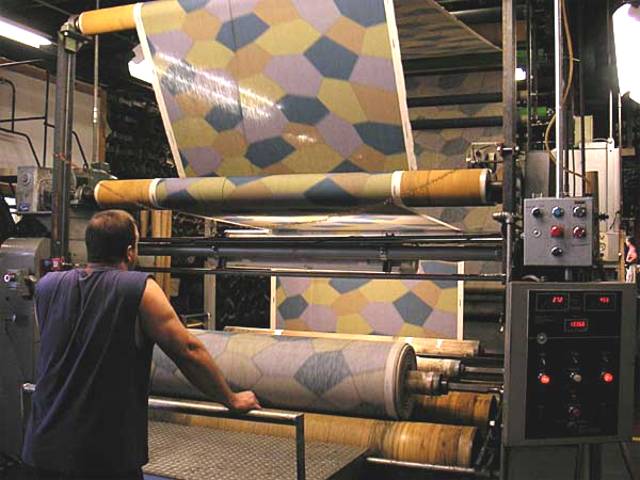
Five colour modern under
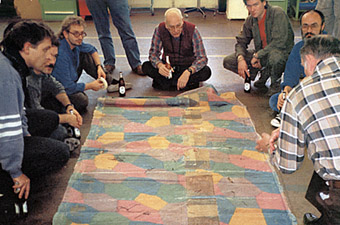
Five colour modern
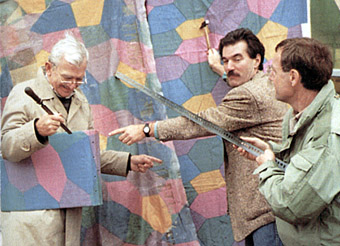
highlandflinger

Joined: September 04, 2014
KitMaker: 53 posts
AeroScale: 53 posts

Posted: Thursday, October 23, 2014 - 09:43 AM UTC
Thanks Captain Tommy, That is an interesting addition to my knowledgebase. Sadly I have never had the opportunity to actually view any Lozenge decorated types in person (You can't trust an image on the internet or in a printed book for accuracy at all given the limitations of display systems and the standard four colour printing process. Having been involved in the printing industry and art materials I have been long familiar with the vagaries of colour. After all the amount of sheen on the surface/type of light source and angle of light under which it is viewed/density of application and material qualities of the item that has been colourised/ type colour and refractive qualities of the applied dope/temperatures and humidity at the time of production and Temperature and humidity at time of doping are only some of the factors which affect the colour not to mention the quality of colour perception of the person tasked with preparing the dyes or paints in the first place and the quality of colour perception of the eyes of the person analysing the finished article in order to replicate it for decals followed by the restrictions imposed by the nature of decal printing. In short I reckon that, unless each decal sheet is based on a lengthy process of using a good colourimeter and taking readings from the real aircraft you are modelling and then making exact spot colours based on these readings and ensuring that the surface finish of the decal(Including any lacquer applied over it) matches the original aircraft in texture and refractive index it is impossible (On any practical grounds) to ever manufacture anything other than an approximation of what Lozenge colours were in general.

JackFlash

Joined: January 25, 2004
KitMaker: 11,669 posts
AeroScale: 11,011 posts

Posted: Thursday, October 23, 2014 - 09:48 AM UTC
Quoted Text
Ah sorry I think I may have created a misunderstanding, I meant the use of mauve withi what we would now call "traditional" type of camouflage used on the wings of aircraft such as the Albatros and Roland C.II. I can understand how the lozenge works in a similar way to the modern Flektarn developed originally for the Wehrmacht and now used by the Bundeswehr which has proven highly effective and now has variants used by the US marines as well as other elite forces although it was avoided for a long time because of association with elite SS units of WWII despite having been repeatedly tested against other types and found to be one of the most effective.
For the fifth time on this forum. Mauve was never used on the Roland C.II. Production stopped before the mauve was introduced. Your understanding of German farbenstoff is obviously limited. But you probably won't take the time to do the research - read the reference threads here at Aeroscale. You quote WWII and modern US Marine topics here? They have no bearing, they did not exist during 1914 - 1918.
highlandflinger

Joined: September 04, 2014
KitMaker: 53 posts
AeroScale: 53 posts

Posted: Thursday, October 23, 2014 - 09:50 AM UTC
In short I think I have come to the conclusion that the pattern is the most important thing to represent accurately and the colour only need to be in the ballpark in my view and I am left wondering why on earth it seems to be such a sore point for a lot of people in WW1 circles.
highlandflinger

Joined: September 04, 2014
KitMaker: 53 posts
AeroScale: 53 posts

Posted: Thursday, October 23, 2014 - 09:58 AM UTC
Sir I am well aware that mauve was not used on the Roland C.II i referred to it as an example of the style of camouflage layout and not camouflage colour and I quoted the WWII and onwards camouflage patterns as comparisons of camouflage concepts. This kind of reply with it's arrogance and point scoring nature is why I am now signing off from this forum.
Dosen't exactly foster learning and comradeship does it? Trying to talk down to people and score points to reinforce one's own importance is not very becoming sir.
That said, blue skies and goodbye to all!
Dosen't exactly foster learning and comradeship does it? Trying to talk down to people and score points to reinforce one's own importance is not very becoming sir.
That said, blue skies and goodbye to all!

Removed by original poster on 10/23/14 - 22:06:33 (GMT).
 |









